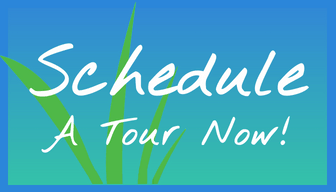by Ariela Grodner

Grodner
Protecting oneself from taking on the symptoms of dis-ease that a client exhibits is a consistent and recurring issue for practitioners across the entire spectrum of massage modalities. How does one cultivate the necessary empathy and awareness to consciously address whatever the physical issue is, without making themselves vulnerable to the very symptoms they are trying to treat?
It’s a common issue for many students of the healing arts, and one that is generally indicative of a practitioner’s underlying empathic abilities, as well as one that almost everyone determined to explore this path will have to address at some point. How do we open enough to another individual’s experience, to be able to correctly diagnose the source of their particular issue, without also opening ourselves to the risk of taking on the symptoms of that issue?
In exploring this question in my own practice I have yet to find an alternative method for addressing my client’s needs without (at least on some level) internalizing and experiencing that client’s personal suffering. In my practice I have found my own empathy to be an incredibly valuable tool in both determining accurate diagnostics and in correctly treating my clients’ needs. I’ve come to the conclusion that the gains afforded via my own kinesthetic identification with a client far outweigh whatever temporary sufferings I might take on in my own body over the course of administering to my clients’ needs. The question for me is not how to avoid taking on my clients’ suffering. It’s how to do my best to not provide it a fertile ground within which to take root within myself.
In writing my most recent book I found that I took on every symptom (to a greater or lesser degree) that I described while documenting them. When I wrote about hip pain, I experienced it. When I wrote about headaches I experienced migraines. In physically manifesting this degree of simpatico I found that my best defense was a level of Buddhist nonattachment that I’d never needed before, at least to such a practical degree.
Those of us who have explored the Buddhist philosophy are very aware of the consequences of attachment, but we are generally more predisposed to think in terms of letting go of our attachment to that which we love or desire. It’s just as important (if not more so) to allow ourselves to let go of the aspects of our existence that we do not want or have use for, especially when it’s something we have invited in from an external source. All of us, to some degree or another, define ourselves by our previous experiences, and have learned to crave that which we enjoy and reject that which we don’t.
Relative to bodywork, when I touch a body I perceive one’s physical incarnation to be a vessel of pure water and consciousness, the miracle of a living pulse moving through every cell. With this in mind, I know that I also have these same qualities. When we touch each other we are quiet musicians making music together. When two musicians play in concert, harmony is only achieved when they are both strong in themselves and listening to the other. So is the case with bodywork. We are communicating on a pulse level. If my client is carrying the pulse of a disease, I will join in on that so I can better understand the nature of that disharmony from within. It’s my job to try and encourage awareness and allow the nature of the body to find its own wisdom for the restoration of balance.
When all is said and done, nature is the true healer. Every cell wants balance. I am just the witness. In the process of witness, I may take on a rhythm that is not my own. I may feel it and even suffer from it, but ultimately I need to release it. It doesn’t serve me, so in the end of every session, I reclaim my own rhythm by sitting in silent observation of my breath. I cultivate love and compassion for all beings and I fill myself with knowledge of the transitory nature of all experience.
This is how I protect myself. I dive in fully, feel the truth, and then protect my own narrative with meditation and the cultivation of positive thoughts. We are so privileged to walk on this path of service, it is through this that we develop in wisdom and love for all beings and cultivate our own individuality and personal strength as we walk this path together.
Ariela Grodner teaches a 108-hour certification training in traditional Thai Massage. The new cycle begins in April. For details go to bodhisangha.com.



